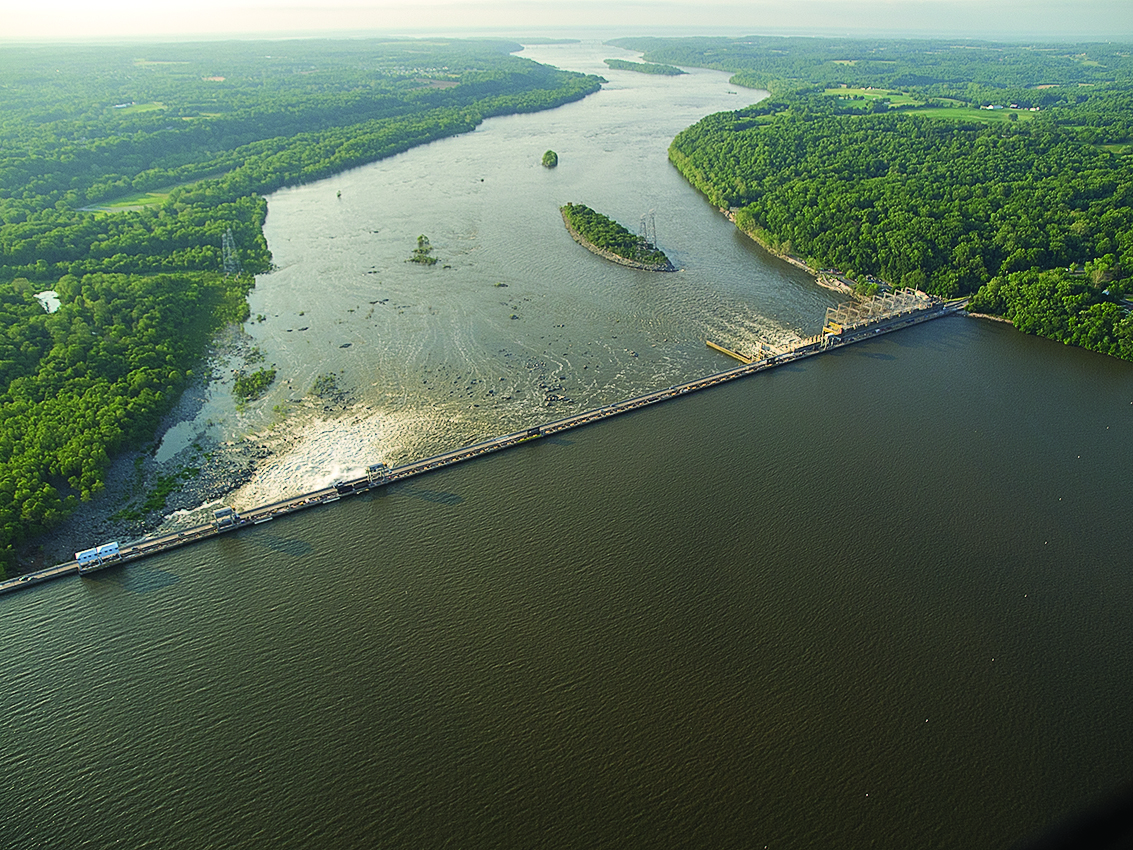In the beginning was the Word … and the Word was "Full."
So, I didn't invent the foregoing writing technique; but sometimes it's best to just begin at the beginning: Distill your focus to a word and probe the implications of that word.
Take "estuary," meaning an embayment in a coastline—like our Chesapeake, where rivers draining 64,000 square miles collide and struggle for supremacy with the sea.
The Latin verb aestuare means to heave, boil, surge, be in commotion. It's the perfect definition of a place where 40-odd tributaries war with ocean tides—a most dynamic place, with freshwater and saltwater, flood and drought, ebb and flow, and all manner of critters moving in and out, Sargasso to Susquehanna, Norfolk to Nova Scotia. All of which makes it an enormously challenging environment to predict and manage.
But today's word for thinking about the Bay (and beyond) is even more basic than "estuary," Today's word is "full." Its variants occupy an entire page in my big unabridged Webster's, from full moon to full nelson, from full house to full-court press.
Fulminate and fuliginous notwithstanding, "full" on the whole implies something better than "empty." And for much of my environmental reporting career we were more concerned about empty: running out of oil, depleting topsoil, losing open space, keeping pace with world food demand.
All of these remain worrisome. But the filling of earth's sinks, its repositories for absorbing, buffering, cleansing, sequestering pollution may, in fact, turn out to be a tougher challenge than resource depletion.
Take, for instance, the headline "Conowingo Dam is Full." Variations of it have appeared in newspapers throughout the Chesapeake since a very wet 2018 sent historic volumes of water and trash hurtling down the Susquehanna, from Pennsylvania and New York, across the 94-foot high dam near the river's entry to the Chesapeake.
Conowingo, which came online nearly 90 years ago, accounts for 55% of Maryland's renewable energy. It has trapped so much sediment behind its massive concrete face in that time that it is now full, passing on excessive quantities of dirt and attached phosphorus fertilizers to the Chesapeake, forcing us to re-examine how to reach already lagging cleanup goals.
The dam is the tiniest example of a vastly larger problem with growing full.
The oceans are full of plastics, which may outweigh the biomass of fish by 2050, according to some scientific estimates. Microplastics plague the Chesapeake, and we're trying to understand the implications.
Much better understood is an atmosphere full of CO2, peaking at 37.1 billion tons last year. The resulting global warming drives sea level rise and worsening erosion in the Chesapeake, promising huge losses of wetlands, coastal forests and property values. Restoration of eelgrass, a vital lower Bay habitat, has become futile because the species cannot handle Bay waters that could grow as warm as South Florida's by 2100.
Very recent evidence shows another formerly reliable "sink" for CO2 is filling up—as waters warm, phytyoplankton in the world's oceans are able to take less and less carbon out of circulation.
Also "full" are agricultural soils throughout intensive animal farming regions of Maryland, Virginia and Pennsylvania. Decades of overapplying manure, a cheap fertilizer, have saturated the soil with phosphorus, adding to the excessive nutrients that cause the loss of oxygen and declines of sea grasses in the estuary.
Similarly, the shallow groundwater across much of the Bay's watershed is full of polluting nitrate, the result of millions of acres of intensive row-cropping that "leak" excess soluble nitrogen into the Bay through subsurface flows.
There is no quick reversal for the aforementioned fillings-up of air, oceans, soils, dams and groundwater; we can only reduce or stop the sources of pollution and warming and wait decades to centuries for balance to be restored.
"The world is full," says Virginian Herman Daly, an internationally regarded economist. He explains that for most of humankind's time on earth, the amount of fish we could catch, wood we could harvest, crops we could irrigate, was limited by the amount of nets and boats, as well as the technology to saw down trees and pump water.
Now it is limited by the diminishing numbers of fish and suitable timber and the flow of water down rivers. But our modern economy has not made the transition, and keeps pushing and investing to exploit nature harder, when it should be pivoting toward nature's restoration and maintenance.
We should tax the pollution and overconsumption that is filling the world, Daly says, and use the proceeds to restore natural resilience.
His notions, propounded in books you can find under "ecological economics," are eminently sensible—also radical, even threatening to the status quo. That's because they imply that the ecosystem of the planet sets limits on the human economy; imply that an end to growth might be necessary and desirable.
Conventional economics and politics don't like limits, unless it's maybe limits on limits (aka regulations). But look at Conowingo Dam, look at our air and oceans and soils and groundwater—all increasingly, blaringly, full.
Tom Horton has written about Chesapeake Bay for more than 40 years, including eight books. He lives in Salisbury, where he is also a professor of Environmental Studies at Salisbury University. His views do not necessarily reflect those of the Bay Journal.
A Word to the Wise on the Chesapeake Bay: Full

The buildup of sediment behind Conowingo Dam on the Susquehanna River is one example of a vastly larger environmental problem with growing full. (Photo: Dave Harp)


